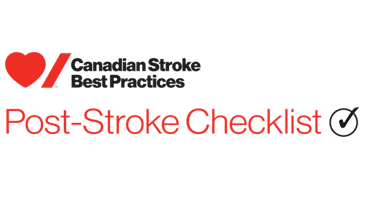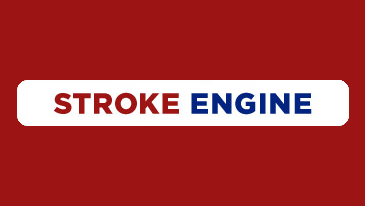Notes
- This section addresses specific elements of rehabilitation for individuals with vascular cognitive impairment, regardless of underlying cause.
- Additional recommendations and information related to cognitive rehabilitation can be found in the CSBPR Rehabilitation, Recovery and Community Participation modules.(Mountain et al. 2020; Teasell et al. 2020).
- Evidence supporting rehabilitation of cognitive challenges related to vascular cognitive impairment is growing, but current evidence is in general derived from investigations with a limited number of patient groups, including stroke, acquired brain injury (ABI), MCI or mixed dementia. Studies with these mixed populations were included if they specified inclusion of individuals with a vascular etiology.
Recommendations and/or Clinical Considerations
3.0 Assessment and Planning for VCI Rehabilitation
- All individuals with a diagnosis of VCI should be assessed to determine their cognitive rehabilitation needs using validated assessment tools where available [Strong recommendation; Low quality of evidence].
- Individuals with VCI, caregivers and families should be engaged in the development of a cognitive rehabilitation treatment plan that addresses current impairments and limitations, is goal-oriented and involves shared decision-making [Strong recommendation; Low quality of evidence].
- Cognitive rehabilitation treatment plans should take into account the evolving nature of VCI and be regularly reviewed and adapted as the individual’s cognitive status changes [Strong recommendation; Low quality of evidence].
- Interventions should be individualized, based on best available evidence, and have the long-term aim to facilitate resumption or continued safe participation of desired activities (e.g., self-care, home and financial management, leisure, driving, return to work) [Strong recommendation; Low quality of evidence].
- Interventions should consider pharmacological and non-pharmacological approaches [Strong recommendation; Low quality of evidence].
- A multipronged approach to rehabilitation should be considered that includes both domain specific (e.g., attention, memory, executive function) and global strategies (e.g., physical activity and exercise) [Strong recommendation; High quality of evidence]. Refer to the CSBPR Rehabilitation, Recovery and Community Participation module for additional information.(Mountain et al. 2020; Teasell et al. 2020)
Section 3.0 Clinical Considerations
- A comprehensive assessment of cognitive strengths and weaknesses as outlined in Section 1.2, is required to consider the impact of challenges (such as impaired visuo-perceptual function, learning abilities, and awareness and insight into changes) on motivation, ability to engage in planning and treatment, and specific approaches to treatment delivery.
- For treatment planning, consider the prognosis for cognitive recovery or decline, and the potential impact of other existing comorbidities (such as fatigue, pain, depression/ or anxiety) on the individual’s ability to participate in and benefit from cognitive rehabilitation.
- The availability of social support and the existing physical environment may impact participation, safety, and outcomes. Modifying the social and/or physical environment and embedding structure and routine may be considered to optimize specific cognitive rehabilitation techniques.
- Both compensatory and remedial approaches may be applied in a person-centred approach to optimize function.
- In addition to interventions tailored for specific cognitive domains, other approaches that directly impact brain function or health (e.g., non-invasive brain stimulation, and physical activity) have received growing attention as modulators of cognition.
- Multimodal approaches (e.g., diet, social activities, music, health education) may be considered to improve cognitive performance or to prevent cognitive decline.
Additional recommendations and information related to cognitive rehabilitation can be found in the CSBPR Rehabilitation, Recovery and Community Participation module (Mountain et al. 2020; Teasell et al. 2020)
Stroke and VCI can result in deficits across multiple cognitive domains. Cognitive rehabilitation strategies, including single and multidomain interventions, using both remedial and compensatory approaches, can be used help to restore executive functioning (problem solving, decision-making, planning), attention, memory, and cognitive-communication skills.
People with lived experience highlight the importance of equitable access to cognitive rehabilitation. They emphasized that individuals with VCI, their family and caregivers should be actively engaged in the development of cognitive rehabilitation treatment plans that are individualized and focus on person-centred goals.
To ensure people experiencing VCI receive timely assessments, interventions and management, interdisciplinary teams need to have the infrastructure and resources required. These may include the following components established at a systems level.
- An adequate complement of clinicians experienced in cognitive rehabilitation available in all regions.
- A clear process for referral of patients to rehabilitation professionals and programs following diagnosis and when need to re-access over time.
- Standardized, validated, and expert consensus-based screening assessment tools and training specific to cognitive impairment and rehabilitation.
- A process for timely referral to specialized cognitive rehabilitation services in all centres (for example, electronic referral system and standardized assessment tools).
- Mechanisms to periodically re-evaluate individuals with VCI as this condition can be progressive over time, to ensure individuals with VCI have access to ongoing rehabilitation to meet their changing needs.
- Coordination and development of strong partnerships in the community, and adequate resources to ensure access to comprehensive rehabilitation services and support. This is especially important in more rural and remote geographic locations where telehealth technologies should be optimized.
- Access to safe communities and environments for people with changing cognitive needs who wish to remain in their homes and communities.
System indicators:
- Number of cognitive rehabilitation programs available in Canada by region.
- Percentage of Telehealth/Telestroke coverage to remote communities to support organized stroke care across the continuum, including providing rehabilitation assessments and therapies for stroke patients.
Process indicators:
- Proportion of individuals with VCI who undergo an initial cognitive rehabilitation assessment following diagnosis.
- Percentage of individuals with VCI who receive a referral for inpatient or outpatient cognitive rehabilitation (either facility-based or community- based programs).
- Median length of time between referral for cognitive rehabilitation to commencement of cognitive rehabilitation therapy.
Patient-oriented outcome and experience indicators:
- Self-reported quality of life following diagnosis of VCI using a validated measurement tool, measured longitudinally.
- Functional outcome scores following diagnosis of VCI, measured longitudinally.
Measurement Notes
- Measures of quality of life and functional outcomes should occur at regular intervals to detect changes over time. This data should be shared across providers and settings to support collaboration and access to relevant data for optimal care of individuals with VCI.
- Benchmarks for VCI indicators are not currently available – with improved data collection and sharing will support the establishment of evidence-based benchmarks.
Resources and tools listed below that are external to Heart & Stroke and the Canadian Stroke Best Practice Recommendations may be useful resources for stroke care. However, their inclusion is not an actual or implied endorsement by the Canadian Stroke Best Practices team or Heart & Stroke. The reader is encouraged to review these resources and tools critically and implement them into practice at their discretion.
Health Care Provider Information
- Canadian Stroke Best Practice Recommendations Vascular Cognitive Impairment Module Appendix Five: Lived Experience of Vascular Cognitive Impairment Journey Map
- Canadian Stroke Best Practice Recommendations Rehabilitation, Recovery and Community Participation following Stroke Module
- Heart & Stroke: Taking Action for Optimal Community and Long-Term Stroke Care (TACLS) A Resource for Healthcare Providers
- Vascular Harmonization Guidelines
- Evidence-based Review of Post-Stroke Cognitive Disorders (EBRSR)
- CanStroke Recovery Trials
- Canadian Consensus Conference on Diagnosis and Treatment of Dementia (CCCDTD)5: Guidelines for management of vascular cognitive impairment
- SIGN (Scottish Intercollegiate Guidelines Network) 168 Assessment, diagnosis, care and support for people with dementia and their carers
- AHA/ASA Scientific Statement on Vascular Contributions to Cognitive Impairment and Dementia
- NHS Psychological care after stroke
- Stroke Engine, Cognition section
- Stroke Engine, Cognitive Rehabilitation
Information for People with VCI, their Families and Caregivers
- Heart & Stroke: Vascular Cognitive Impairment Infographic and Journey Map
- Heart & Stroke: Your Stroke Journey
- Heart & Stroke: Post-Stroke Checklist
- Heart & Stroke: Virtual Healthcare Checklist
- Heart & Stroke: Secondary Prevention Infographic
- Heart & Stroke: Rehabilitation and Recovery Infographic
- Heart & Stroke: Transitions and Community Participation Infographic
- Heart & Stroke: Vascular Cognitive Impairment
- Heart & Stroke: Stroke Recovery and Support
- Heart & Stroke: Services and Resources
- Heart & Stroke: Depression, Energy, Thinking and Perception
- Heart & Stroke: Online and Peer Support
- Heart & Stroke: Support for family care partners
- Heart & Stroke: Recognizing and Handling Stress
- Stroke Engine
Evidence table and reference list
Cognitive Rehabilitation
VCI (no stroke)
In a Cochrane review (Bahar-Fuchs et al. 2019), which included data from 33 RCTs of individuals with mild to moderate VCI, multi and single domain cognitive interventions were associated with significant improvements in in the composite measure of global cognition, when assessed immediately after the intervention (SMD=0.42, 95% CI 0.23 to 0.62) and at 3-12- month follow-up (SMD=0.65, 95% CI 0.11 to 1.2), compared with active and passive interventions. A multi-domain adaptive internet-based training program resulted in significantly increased mean MoCA scores from baseline, compared with an active intervention control group (lower difficulty tasks) at 7 weeks (mean change of 3.36 vs. -0.85, p=0.013) in the Cog-VACCINE trial (Tang et al. 2019). In this trial, participants were recruited from neurology and geriatric clinics from 3 hospitals, with complaints of cognitive impairment involving memory or other cognitive domains lasting ≥3 months, but without dementia.
Post-stroke VCI
Among the earliest and most pronounced cognitive abnormalities are deficits in attention and executive function. Small to medium effect sizes for cognitive recovery (Hedge’s g 0.35-0.48) have been reported in these domains in systematic reviews including individuals with stroke who received cognitive rehabilitation (Saa et al. 2021) (Rogers et al. 2018). Effect sizes were higher in trials that provided interventions earlier following stroke, and in trials that provided an intervention for a longer duration. In a systematic review including the results of 64 RCTs, including 4,005 individuals with/without cognitive impairment following stroke, trials compared cognitive rehabilitation strategies to improve cognitive function with a control group (O'Donoghue et al. 2022). Multiple component interventions were associated with higher mean MoCA scores, improved measures of memory, and better functional status, compared with individuals receiving standard care. There were no significant differences between groups comparing cognitive rehabilitation interventions with an active control in any of the outcomes assessed (general cognitive functioning, memory, executive function, or attention), nor was there a difference between groups comparing cognitive rehabilitation interventions vs. wait list control (memory).
While physical activity has been shown to prevent the development of VCI in healthy older adults (Gallaway et al. 2017; Verdelho et al. 2012), it may also help to improve cognitive outcomes in individuals with existing forms of VCI. In a systematic review & meta-analysis including 18 RCTs of 802 elderly participants with dementia (primarily Alzheimer’s dementia) living both in care facilities and the community, physical activity was associated with an improvement in global cognitive function (SMD=0.42, 95% CI 0.23 to 0.62)(Groot et al. 2016). The duration of the intervention ranged from 6 to 52 weeks. This positive effect was accompanied by improvements in activities of daily living.
Sex, gender and other equity-related considerations
Sex and gender were not explored as potential effect size moderators in any of the literature reviewed on cognitive rehabilitation. In the Cochrane review of 33 cognitive rehabilitation trials including individuals with mild to moderate dementia (Bahar-Fuchs et al. 2019), no subgroup analyses were conducted based on sex, nor was it explored in a systematic review and meta-regression (Saa et al. 2021) of 43 intervention and observational trials examining changes in cognition post stroke. Separate literature searches conducted to identify sex and gender differences associated with cognitive rehabilitation strategies did not yield any results.





